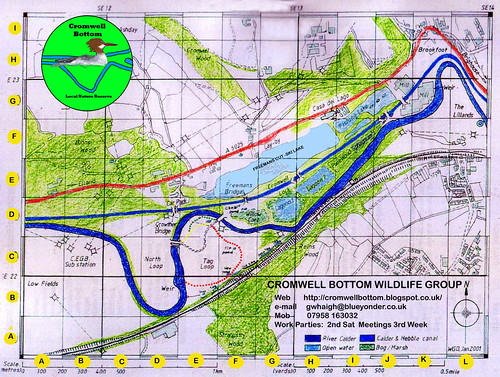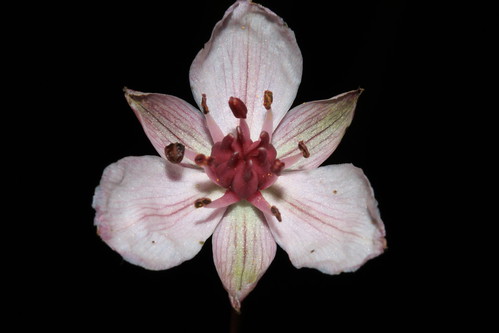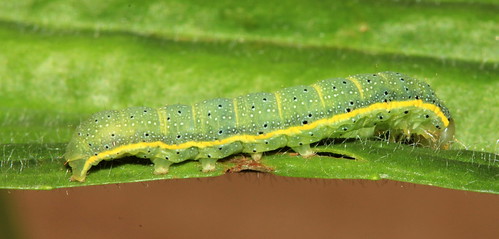- In regard to cutting regimes along the canal by the principle Body British Water. A suggestion of small discrete signage directing contractors to avoid 1 - 2 m around Rare or Scarce Plants , Nesting Birds or other Notable flora or fauna . Local Knowlegde from groups or CBWG could assist in this role and possibly consist of small laminated sign cues placed for contractors to see on approach to the area to be mainatained etc The importance of the adjacent Canal and associated Tree Line to Cromwell LNR is of important ecological consideration to the reserve . Spraying regimes on water bodies and transient species nesting accross habitats are therefore important considerations to get right in the engaement of contractors and there is a duty of care owed amongst other legal considerations\
- We touched upon Dog Fouling. FEET assessment : The issue is the instalation of a Receptiical Bin ( ideally at Brook at site entry just past Anglers Pond entrance. The two responsible bodies would be British Waterways (Duty of Care) and Calderdale MBC ( Public Health). The issue appears to be who would install and pay fot it ( our view the former) and who would empty it ( our view the latter) .
- This would ensure that from Brookfoot to Crowther Bridge a facility for disposing dog foul would be present keeping the perimeter of the LNR Clear and cleanFEET looked at the possibility of restoring the small triangular piece of land as a Wild flower (Tansy) feature and putting an interpretation Board at this POC Point of Contact whilst technically off the reserve it is a significant high impact area at the opposite proximity of Crowther BridgeFloating Water Plantain Luronium natans
- Floating water-plantain occurs in a range of freshwater situations, including nutrient-poorlakes in the uplands and slowly-flowing lowland rivers, pools, ditches and canals that are moderately nutrient-rich. It thrives best in open situations with a moderate degree of disturbance, where the growth of emergent vegetation is held in check.
Luronium natans occurs as two forms: in shallow water with floating oval leaves, and in deep water with submerged rosettes of narrow leaves. The plant thrives best in open situations with a moderate degree of disturbance, where the growth of emergent vegetation is held in check. Populations fluctuate greatly in size, often increasing when water levels drop to expose the bottom of the water body. Populations fluctuate from year to year, and at many sites records of L. natans have been infrequent, suggesting that only small populations occur, in some cases possibly as transitory colonists of the habitat. Populations tend to be more
stable at natural sites than artificial ones, but approximately half of recent (post-1980) records are from canals and similar artificial habitats. Its habitat in rivers has been greatly reduced by channel-straightening, dredging and pollution, especially in lowland situations.
Floating water-plantain Luronium natans Flowering Rush Butomus umbellatus
2160 Bright-line Brown Eye Caterpillar Lacanobia oleracea
Orthops campestris
Green Shieldbug
Trichoptera ( Caddis Flies) x3 Species TBC
Orange Ladybird
Orange Ladybird
Harlequin Ladybird
2-Spot Ladybird
7-Spot Ladybird
2-Spot Ladybird
7-Spot Ladybird
14-Spot Ladybird
22-Spot ladybird
Great Black Slug
Moth TBC
Meadowsweet
Birds Nest
Red Campion
Pale Willowherb
Rosevbay willowherb
Great Willowherb
Flowering Rush
Floating Water Plantain
Herb Robert
Harvestman Dicranocephalus ramosus
Great Black Slug
Moth TBC
Meadowsweet
Birds Nest
Red Campion
Pale Willowherb
Rosevbay willowherb
Great Willowherb
Flowering Rush
Floating Water Plantain
Herb Robert
Harvestman Dicranocephalus ramosus
Marsh Woundwort
Glycera
Metalina sp
Larinoides Cornutus
White Legged Millipede
Liocorus tripustulatus Mirid
Common Darter
Dicranopalpus ramosus
Leioburnum rotundum
Cepeae nemoralis
Cepeae hortensis
Campylo
Larinoides Cornutus
White Legged Millipede
Liocorus tripustulatus Mirid
Common Darter
Dicranopalpus ramosus
Leioburnum rotundum
Cepeae nemoralis
Cepeae hortensis
Campylo




No comments:
Post a Comment